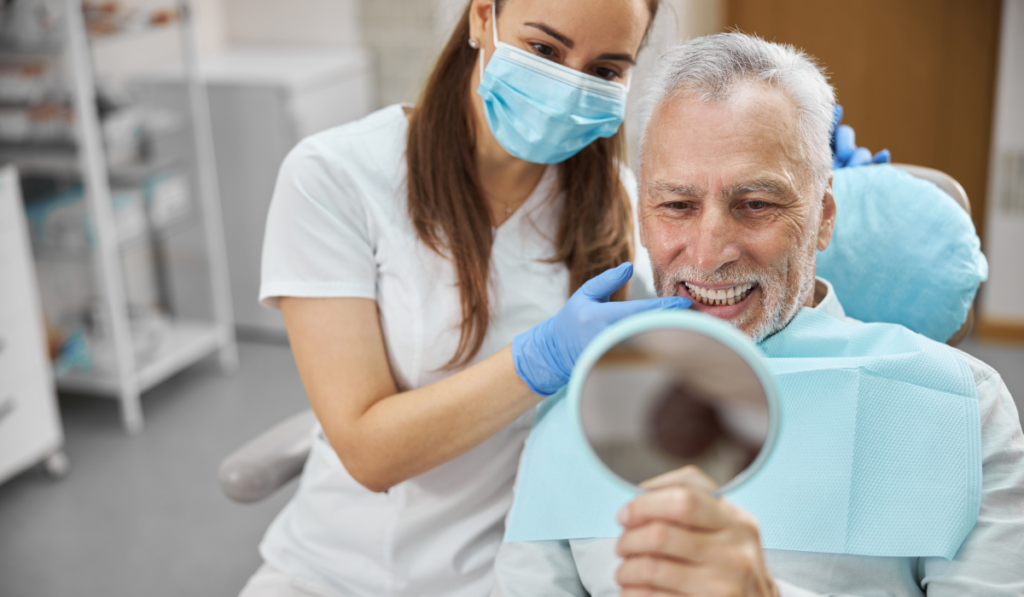As a dental professional, you’re constantly searching for innovative and technologically advanced systems for your practice and your patients. And, although dental implants have become increasingly popular in recent years, a common problem remains: placement angulation, especially as screw-retained restorations have become the go-to restoration in implant dentistry.
The solution? The angled screw channel: a (relatively) new restorative design option that benefits both the practitioner and the patient.
While angled screw channel restorations provide some great benefits, there’s a few things to know that make them different from your standard screw-retained restoration.
Let’s take a look at what you’ll want to know.
1. Angled Screw Channel Offers Improved Aesthetics
One of the biggest issues that can arise with traditional implants which utilize a straight screw channel is that the screw access hole is positioned in a visible location on the facial of the tooth.
While easy to access, this can create a cosmetic issue when placed in the anterior segments.
However, angled screw channel restorations provide a solution to this by relocating the screw access channel to the less-visible occlusal or lingual side of the implant.
This improves aesthetics and the overall appearance of the final restoration.
2. Stronger Restorations
Sometimes, the screw access hole is in a thin or weak point of a crown or bridge.
With the ability to angle the screw channel off these spots, the crown can maintain its integrity in these spots, resulting in a stronger restoration.
3. No Cementing in the Mouth
If an angled screw channel is not utilized, and the doctor opts for a custom abutment and cemented restoration, then the doctor is forced to cement the crown onto the abutment in the mouth.
The problem with this is that excess leftover cement is one of the leading causes of perio-implantitis.
But, by choosing to utilize an angled screw channel, the lab cements the crown in the laboratory. That’s a big advantage, resulting in no cement remaining in the mouth.
And, as an added bonus, it also reduces chairtime and expense for the doctor.
4. Special Screws Require a Special Driver
The screw head used in angled screw channel restorations is a special design that enables the implant driver to engage and torque the screw, even when not at a straight in angle.
Now, you should also know that each restorative system uses a different screw head. And, unfortunately, they’re not generally cross-compatible.
So, if you restore multiple implant systems, you’ll need multiple angled screw channel drivers. Your lab should notify you of this and help to make sure you have the correct driver.
5. The Screw Does Not Back Out of the Screw Channel
With an angled access hole, the screw typically will not be able to be removed from the hole.
Of course, this will depend on the amount of angle correction used, but usually, the screw cannot be removed. Always make sure you keep this in mind when removing the restoration from the mouth.
Bringing It Together
The innovation of the angled screw channel implant design has been a huge success for both patients and dental professionals, alike. With its cutting-edge design and increased accuracy, it’s an excellent solution for numerous dental issues.
And, though the angled screw channel system is relatively new in the field of implant dentistry overall, it’s easy to see why it’s gaining in popularity throughout the industry as time goes on.
Compared to the traditional screw channel, it offers improved aesthetics, stronger restorations, and can eliminate the need to cement them chairside.
At First Choice, we pride ourselves on staying up-to-date with the latest industry innovations, products, and information. So, if you have any questions regarding the angled screw channel implant system, or any other restoration needs, we’re here for you and always happy to help!
We’re confident this system will continue to lead the way in dental implant technology, and oral care treatment in general.
***
About First Choice Dental Lab
First Choice Dental Lab is a full-service dental lab with locations in Downers Grove, Il. & Wauwatosa, Wi.
We manufacture & customize quality dental restorations for general dentists. We create smiles based on your needs and budget.
We’re here to help you give your patients a reason to smile!
Request your fee schedule today by completing the form on this page.




